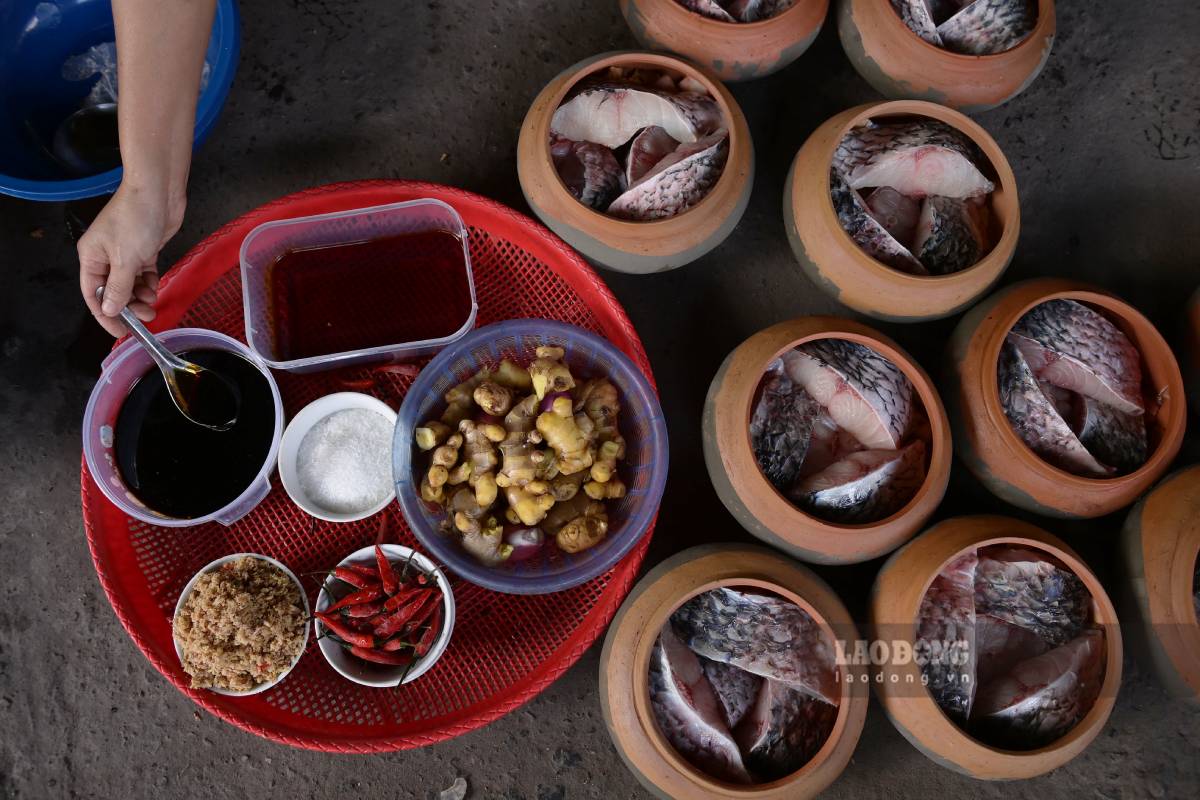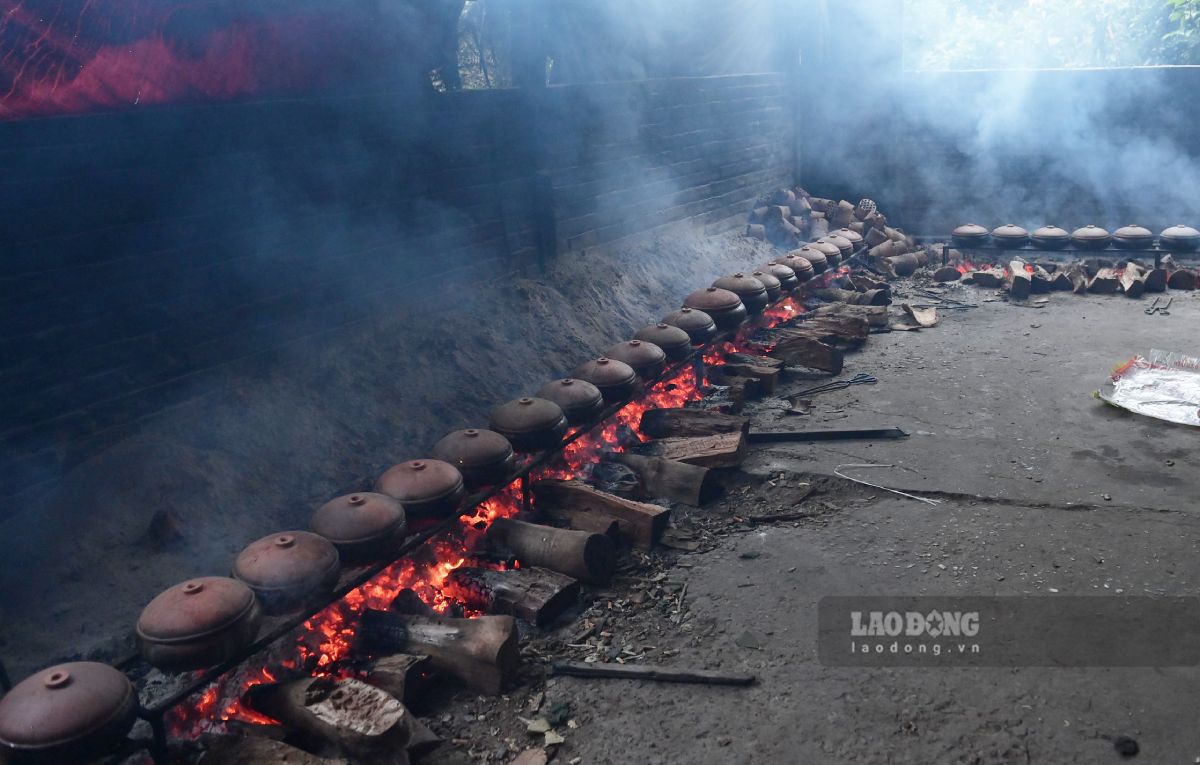When mentioning Vu Dai village in Hoa Hau commune, Ly Nhan district, Ha Nam province, it is impossible not to mention the famous braised fish dish here.
According to the people here, the fish in the warehouse of Vu Dai village has been famous for generations not only for the delicious taste of the fish pot but also for the family recipe and the efforts of the workers who put their heart into the job.
Ingredients for making a pot of braised fish in Vu Dai village such as rieng, ginger, lemon juice, onions, chili... To get a delicious, standard braised fish sauce, you must choose and prepare carefully from the main ingredients such as fish, fish sauce... to the firewood, consumption.

Continuing the profession left by his father, Mr. Tran Duc Phong (in Hoa Hau commune) said that today, each family is creative in processing fish in their own warehouse but still maintains the traditional way of making that their father left.
"After cleaning, black black black tea will be marinated with many spices. Depending on the type of pot, we arrange the appropriate pieces of fish. Then, spread the pan under the pot to prevent fire and create a characteristic flavor. In the braised fish pot, there will be more pork to make the fish more flavorful and delicious. When the fish is boiled for about 30 minutes, the bitter sugar will be added from the white sugar to the steamer, then hung and boiled until the steamer is hot," said Mr. Phong.
The secret to making the fish pot delicious among the people of Vu Dai is to use longan firewood to simmer for many hours. This type of wood burns to charcoal, keeping the heat stable throughout the warehouse process, helping the fish cook evenly.
Mr. Phong shared: "A batch of braised fish is very elaborate, requiring more than 12 hours of bracing. The pot keeper must constantly control the medium amount of pink coal wood and keep the water in the stirrup, not let the water dry. After more than 20 years of working in the profession, I just need to hear the boiling sound to know if the amount of water in the water is still there or not".


When finished, braised fish has eye-catching colors and unique flavors. The price of a stall of fish ranges from 600,000 - 2,000.00 VND/room (depending on the weight of each fishehold).
From Nam Dinh to Vu Dai village to buy braised fish, Mr. Pham Trong (Nam Dinh city) said: "After eating braised fish in Vu Dai village from a friend from Ha Nam, I was very impressed with the flavor. That is why I come here to see and buy fish in stock, then when I want to eat, I will call to send them to Nam Dinh. I felt the piece of fish eating the whole bone but the fish meat was still firm, not crushed, fragrant and not fishy".
According to statistics from the People's Committee of Hoa Hau commune (Ly Nhan district), in recent years, the braised fish industry has developed, bringing a stable income to the people here. Currently, there are 40 households in the commune that make fish for warehousing and sell them all year round.











